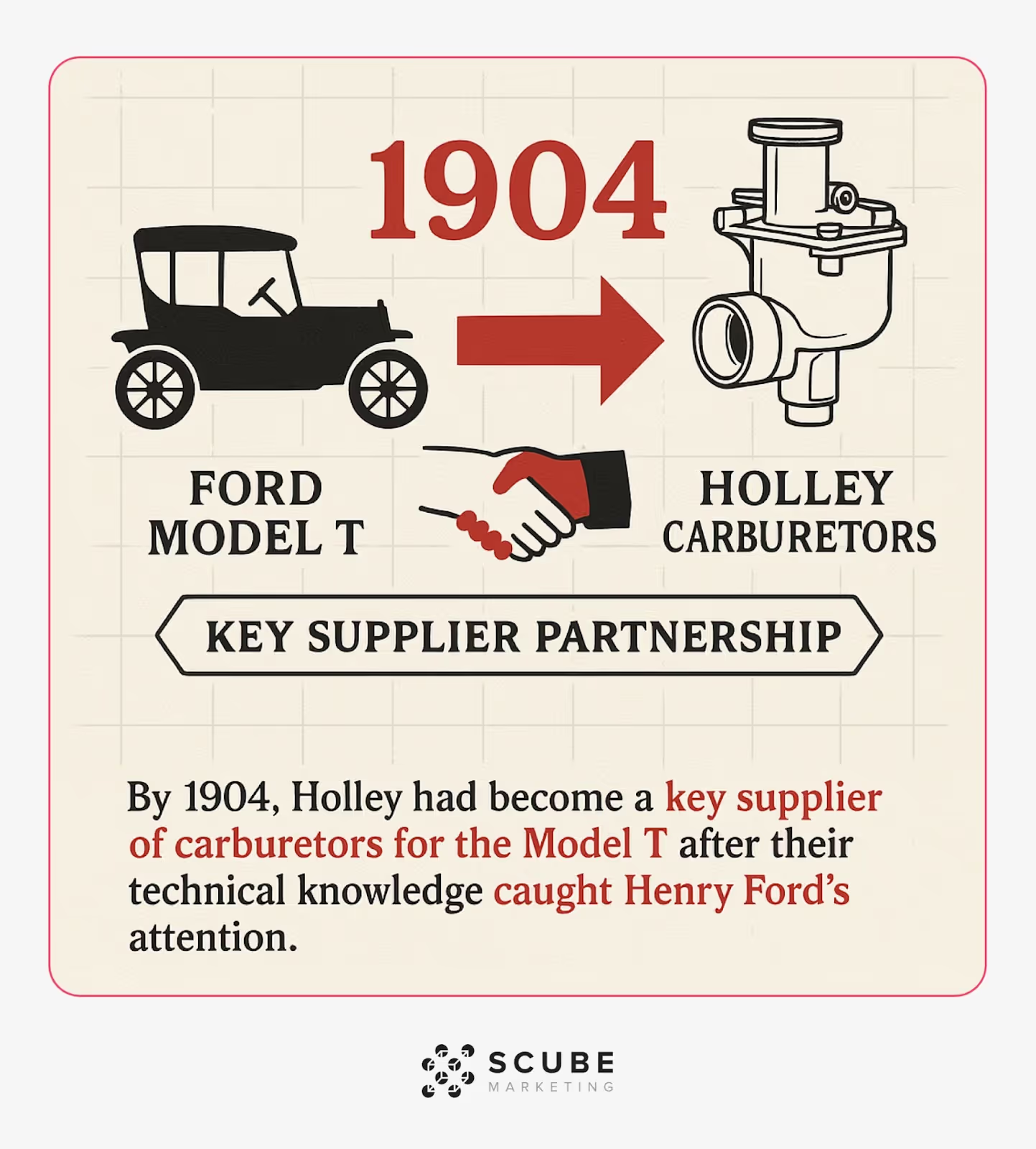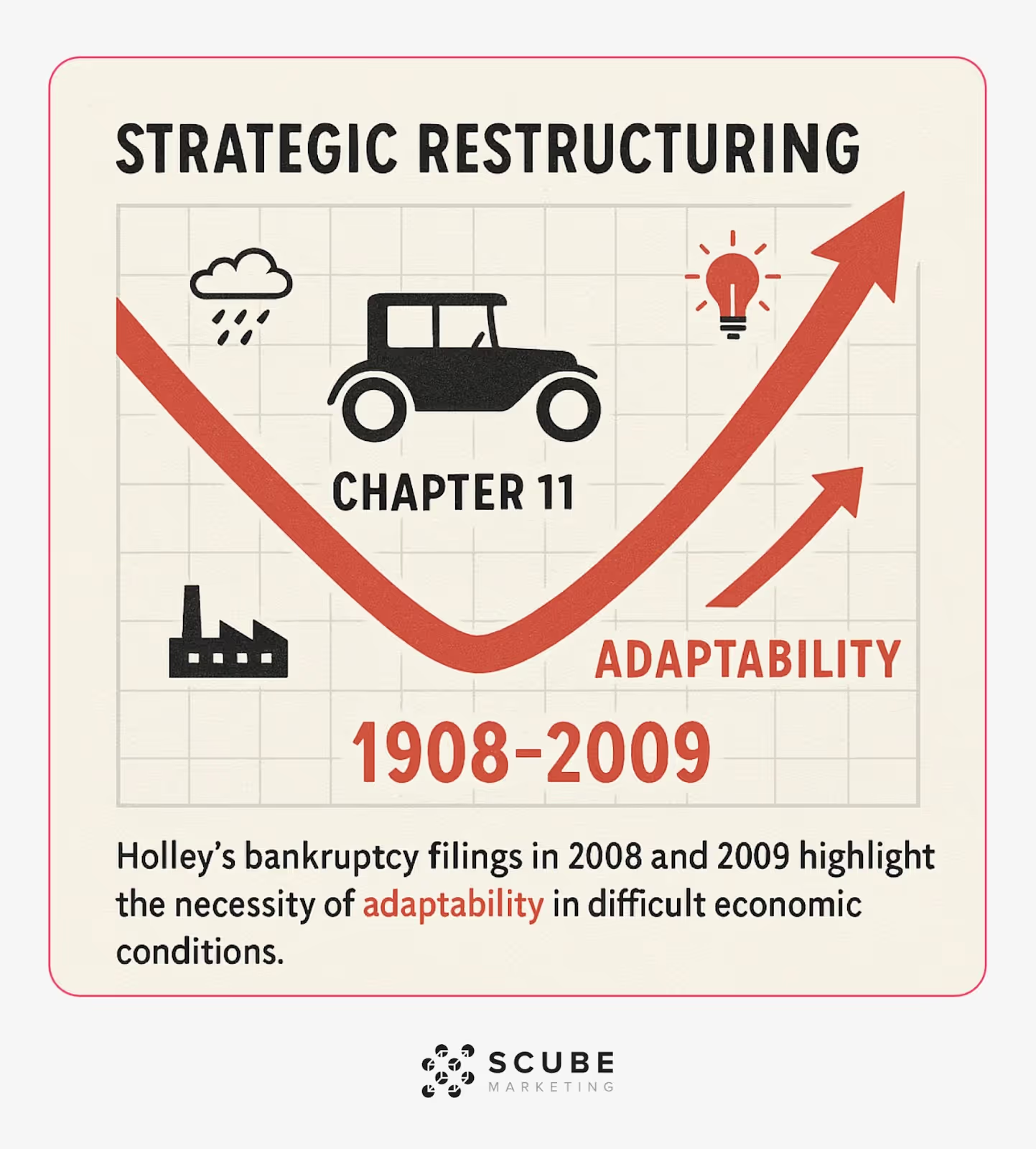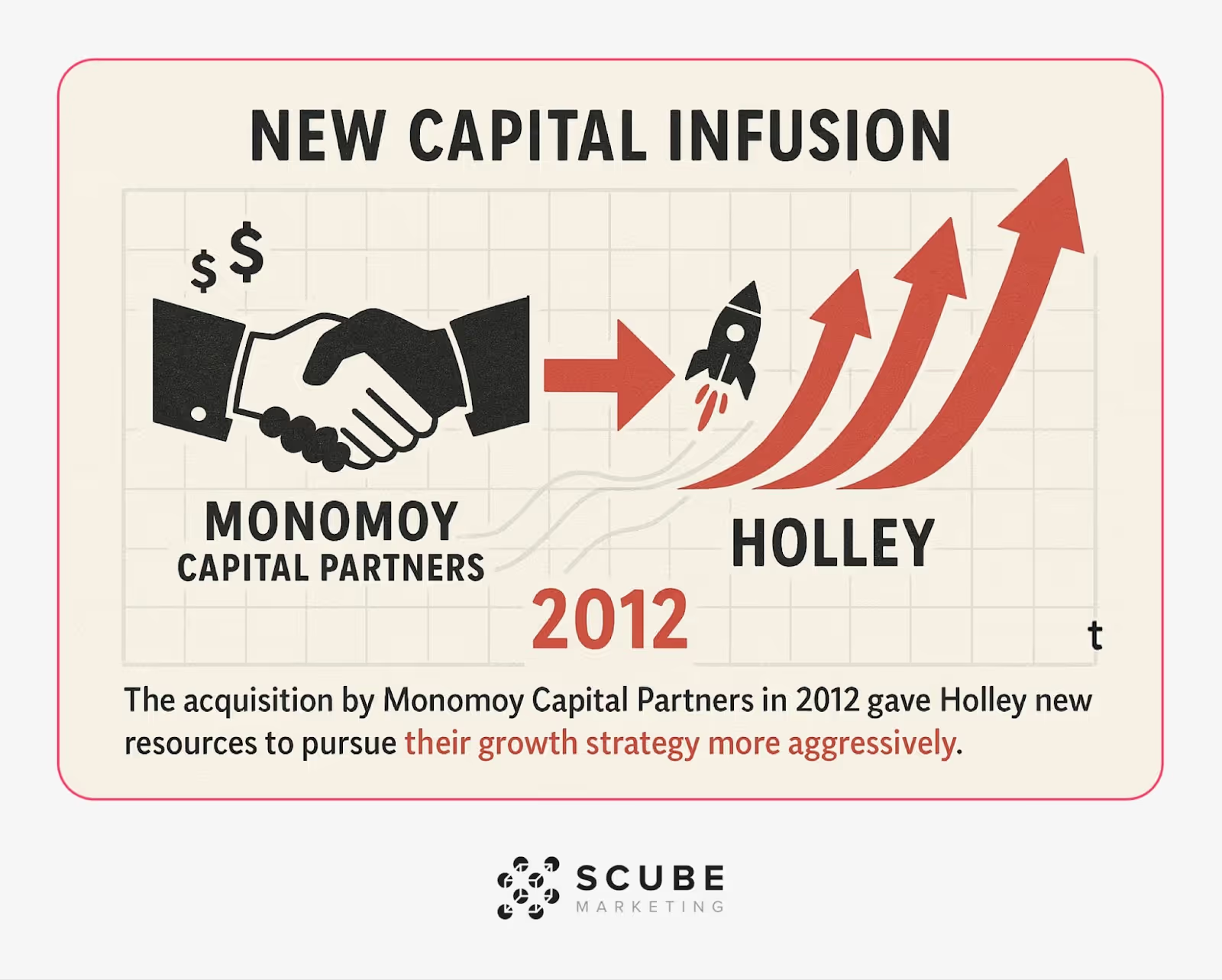
When it comes to automotive aftermarket success stories, few companies offer as rich a history as Holley. Their journey from a small manufacturing shop to an industry powerhouse contains valuable lessons for any marketing professional. As someone who works with automotive and aftermarket parts clients daily, I'm continuously impressed by how certain brands manage to dominate their space despite fierce competition and market changes.
Holley's story isn't just about carburetors and performance parts. It's about strategic marketing decisions that built an enduring brand. Their evolution offers a blueprint for how to build authority, navigate challenges, and create lasting customer relationships in specialized markets.
In this post, I'll break down the key marketing lessons from Holley's journey and show you how to apply these strategies to your own business. Whether you're in automotive parts or any other eCommerce niche, these principles can help you build your own aftermarket empire.

The Holley story begins in 1896 when brothers George and Earl Holley founded the company in Bradford, Pennsylvania. (Source: Wikipedia) What's fascinating is how quickly they established themselves as automotive component experts. Their technical knowledge caught the attention of Henry Ford, and by 1904, Holley had become a key supplier of carburetors for the Model T. (Source: DCF Modeling)

This early partnership with Ford illustrates something critical about marketing. Positioning yourself as an expert partner to industry leaders can accelerate growth dramatically. It's a strategy that still works today for aftermarket parts suppliers looking to establish credibility quickly.
Let's look at Holley's key historical milestones to understand their evolution:
The company's move to Detroit in 1907 shows their strategic thinking about location. (Source: Company Histories) Being close to the automotive industry's epicenter allowed for faster communication, easier partnership development, and greater visibility. This lesson in positioning applies to both physical and digital presence today.

Even Holley's challenges illuminate important marketing lessons. Their bankruptcy filings in 2008 and 2009 highlight the necessity of adaptability in difficult economic conditions. (Source: SS396) What's remarkable is how they managed to restructure and continue growing afterward, eventually achieving a successful public market debut in 2021.
This table makes it clear that Holley's journey wasn't a straight line to success but rather a series of strategic pivots that kept them relevant through dramatic industry changes.
Holley's first major marketing lesson is the power of deep product expertise and specialization. Rather than trying to be everything to everyone, they focused intensely on becoming the authority in fuel delivery systems.
This specialization allowed them to:
The automotive aftermarket is filled with generalists offering everything from floor mats to performance parts. Companies that focus on specific aftermarket niches often outperform those trying to cover too many product categories.
Here's how different specialization strategies compare for modern aftermarket businesses:
When I work with automotive parts clients, I often find the ones with clear specialization have an easier time developing effective marketing messages. Their expertise naturally creates content opportunities and helps them connect with specific customer segments.
The way Holley maintained their focus on fuel systems while expanding their product line demonstrates how specialization can provide a solid foundation for growth. It created a clear brand identity that customers could understand and trust.
If there's one constant in the automotive industry, it's change. Holley demonstrated remarkable adaptability throughout their history, particularly during major technological shifts.
Their adaptation journey provides valuable insights for modern marketers:
One of the most telling examples is how Holley navigated the transition from carburetors to electronic fuel injection. While many traditional carburetor manufacturers struggled with this technological shift, Holley embraced it and developed respected EFI systems that complemented their heritage products.
This ability to evolve while maintaining your core identity is critical for implementing effective automotive eCommerce solutions in today's rapidly changing digital landscape.
The table below examines how different types of market changes require specific adaptation strategies:
Holley's ability to weather these changes wasn't accidental. It required strategic marketing decisions that maintained their brand equity while embracing new opportunities.
Holley's growth strategy offers another valuable marketing lesson: the power of strategic acquisitions and thoughtful brand portfolio management.
As Holley expanded, they didn't simply absorb every company they acquired under one umbrella. Instead, they maintained distinct brands where it made sense, preserving the unique value and customer loyalty of each acquisition.
This approach has several marketing advantages:

The acquisition by Monomoy Capital Partners in 2012 gave Holley new resources to pursue this strategy more aggressively. (Source: Holley Blog)
For modern eCommerce businesses, this multi-brand approach can be adapted in several ways:
When selling auto parts online, deciding whether to present products under one master brand or maintain separate brand identities can significantly impact your marketing effectiveness and customer perception.
What makes Holley's approach successful is their thoughtful decision-making about which brands to consolidate and which to maintain independently. This strategic thinking about brand architecture demonstrates sophisticated marketing that goes beyond simple product promotion.
One of Holley's most significant marketing achievements has been building strong communities around their products. This community-building approach creates a powerful multiplier effect where customers become brand advocates.
The company has fostered communities through:
Community-building delivers several marketing benefits that traditional advertising cannot:
For aftermarket automotive businesses, what is the science behind building customer communities with limited marketing budgets? It starts with understanding what genuinely interests your specific customer segments and creating valuable interactions around those interests.
I've worked with clients who've transformed their marketing results by shifting budget from traditional advertising to community-building efforts. The customers who participate in these communities typically have higher lifetime values and refer more new customers.
Holley's community approach demonstrates that effective marketing isn't just about promoting products. It's about creating spaces where customers can connect with each other around shared passions.
Another critical marketing lesson from Holley is the importance of channel diversification. Throughout their history, they've maintained a balance of distribution channels rather than becoming overly dependent on any single approach.
This diversification includes:
The table below examines the advantages and challenges of different distribution channels for aftermarket parts businesses:
Channel diversification provides important risk management benefits. When economic conditions, consumer preferences, or competitive factors impact one channel, others can help maintain overall business stability.
For modern eCommerce businesses, this might translate to balancing your own website sales with marketplace presence, wholesale relationships, and even strategic retail partnerships. How do automotive inventory systems support multi-channel selling strategies to maximize reach while maintaining efficiency?
The key takeaway from Holley's approach is that channel decisions should be strategic rather than opportunistic, with each channel serving specific business and customer needs.
Now that we've explored the key marketing lessons from Holley's journey, let's look at how to apply these principles to modern eCommerce businesses:
First, develop deep expertise. Identify specific product categories or customer segments where you can build unmatchable knowledge and authority.
Second, prepare for market changes. Create systems to monitor technological, competitive, and customer preference shifts so you can adapt proactively.
Third, consider brand architecture. Determine whether a single brand or multiple specialized brands will best serve your business goals and customer needs.
Fourth, build community connections. Invest in creating spaces and experiences that connect customers with each other around your products.
Fifth, diversify channels strategically. Develop a balanced approach to distribution that maximizes reach while maintaining brand control.
Here's an implementation framework based on these lessons:
This framework provides a structured approach to implementing the lessons from Holley's journey in your own business. The specific tactics will vary depending on your company size, product category, and market position, but the strategic principles remain consistent.
It's worth noting that you don't need to be a large corporation to benefit from these lessons. Even small eCommerce businesses can apply these principles at an appropriate scale.

Holley's journey from a small manufacturing shop to an aftermarket empire offers valuable marketing lessons that transcend the automotive industry. Their success demonstrates the power of specialized expertise, adaptability, thoughtful brand management, community building, and channel diversification.
What impresses me most about Holley's approach is how they've maintained their core identity through more than a century of dramatic industry changes. This consistency, combined with strategic evolution, provides a blueprint for sustainable marketing success.
As you consider your own marketing strategy, I encourage you to look beyond short-term tactics and consider these more fundamental principles:
Where can you develop true expertise that differentiates your business? How are you preparing to adapt to inevitable market changes? What brand architecture will best serve your long-term goals? How can you foster genuine community around your products? Which distribution channels will provide both growth and stability?
By answering these questions thoughtfully and implementing the lessons from Holley's journey, you can build a more resilient and successful marketing approach for your eCommerce business.
Ready to apply these marketing lessons to your automotive or aftermarket business? Contact us today for a strategy session to discuss how we can help you build your own aftermarket empire.